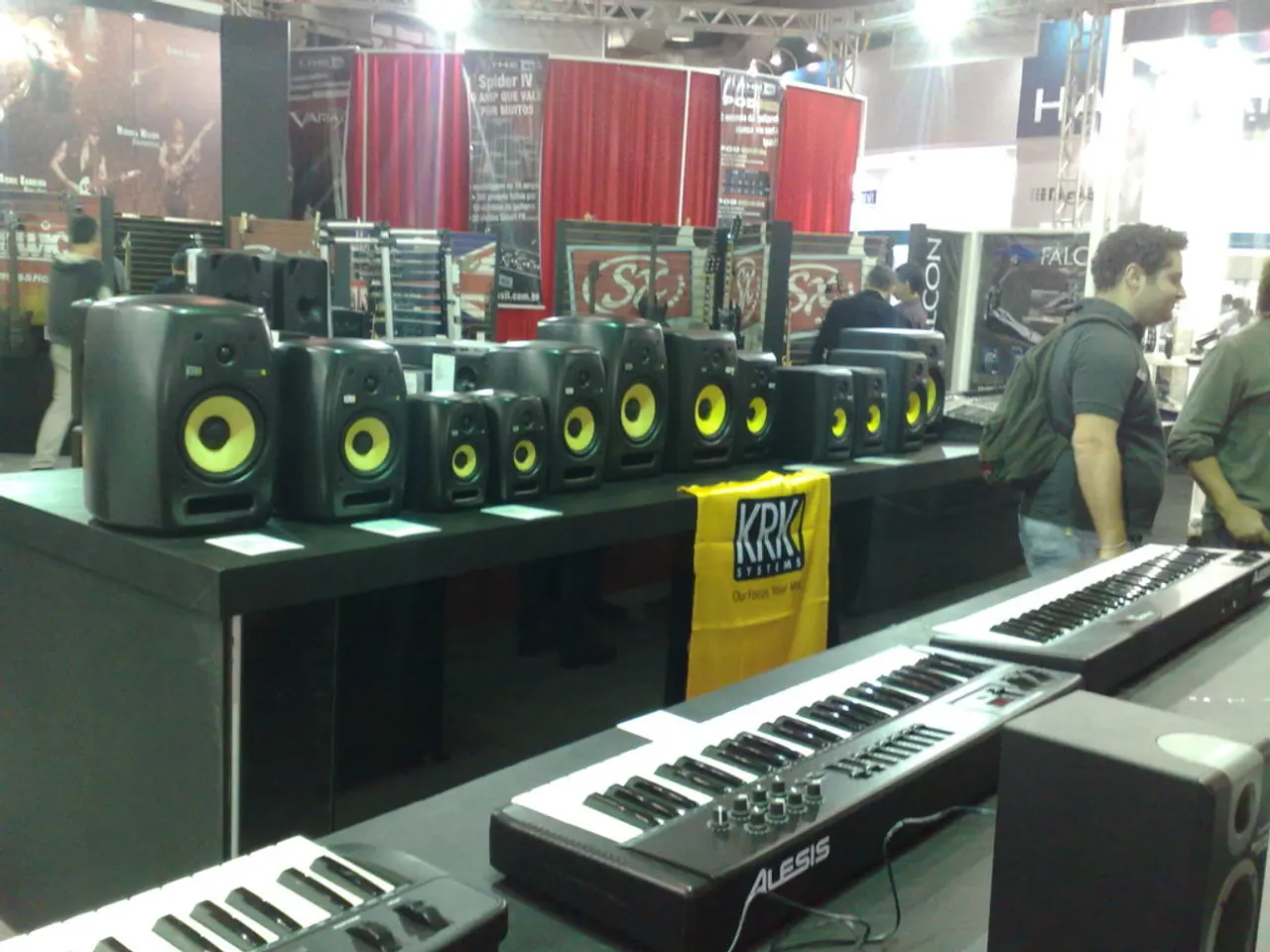Utilize Bluetooth for Audio Output: A Guide on Employing Bluetooth as a Microphone
In the realm of audio technology, the choice between Bluetooth and wired microphones can significantly impact the quality of your recordings. Here's a breakdown of the key differences between these two types of microphones, particularly in the context of music recording.
Bluetooth Microphones
Bluetooth technology, known for its convenience and versatility, is designed to connect various devices while minimising the complexity of cabling. Bluetooth microphones offer greater mobility, allowing for greater freedom of movement during live performances or mobile recording. They are also easy to set up, making them ideal for video conferencing, public speaking, and other applications.
However, Bluetooth mics often compress audio to fit wireless transmission protocols, which can lead to a reduction in audio quality and potential alterations in sound. They may also encounter signal dropouts, interference, or latency issues, which can be critical during studio recording sessions requiring precise timing.
Wired Microphones
Wired microphones, on the other hand, typically produce clearer, more natural sound with a wider dynamic range. They do not suffer from signal dropouts, interference, or latency that Bluetooth mics sometimes encounter, making them preferable for professional and studio music recording.
Wired microphones are powered through the cable (or external phantom power for XLR mics), avoiding battery issues. They tend to be less expensive for comparable sound quality.
Comparing the Two
For music recording where sound quality and reliability are paramount, wired microphones are generally superior. Bluetooth mics provide convenience but at the cost of some audio fidelity and potential signal issues that can be unacceptable in professional music production.
When purchasing a Bluetooth microphone, consider factors like sound quality, battery life, range, and compatibility, as well as any additional features like on-device controls, adjustable stands, or windshields. Positioning your Bluetooth microphone within a suitable range (no more than 10 feet) can help maintain optimal audio input quality.
Connecting a Bluetooth microphone to your device is generally straightforward. On Android or iOS devices, you can connect a Bluetooth microphone by opening the desired application, accessing the audio settings within the app, and selecting your Bluetooth microphone as the input device. On a computer running macOS, you can connect a Bluetooth microphone by opening System Preferences > Sound, clicking on the Input tab, and selecting your Bluetooth microphone from the list.
Regularly updating your device's operating system and audio software can enhance compatibility and performance. If your Bluetooth microphone is not recognized, ensure that it is charged and turned on, paired successfully with your device, and restarted.
In summary, while Bluetooth microphones offer wireless convenience, wired microphones offer superior sound quality and reliability for professional music recording. Bluetooth technology, however, has gained immense popularity due to its convenience and versatility, making it a suitable choice for various applications where audio quality is not the primary concern.
- In the context of music recording, where sound quality and reliability are crucial, wired microphones, with their clearer, more natural sound and greater dynamic range, are generally superior to Bluetooth microphones.
- When choosing a Bluetooth microphone for applications like video conferencing, public speaking, or mobile recording, it's important to consider factors like sound quality, battery life, range, and compatibility, as well as additional features like on-device controls, adjustable stands, or windshields, to ensure optimal audio input quality.




